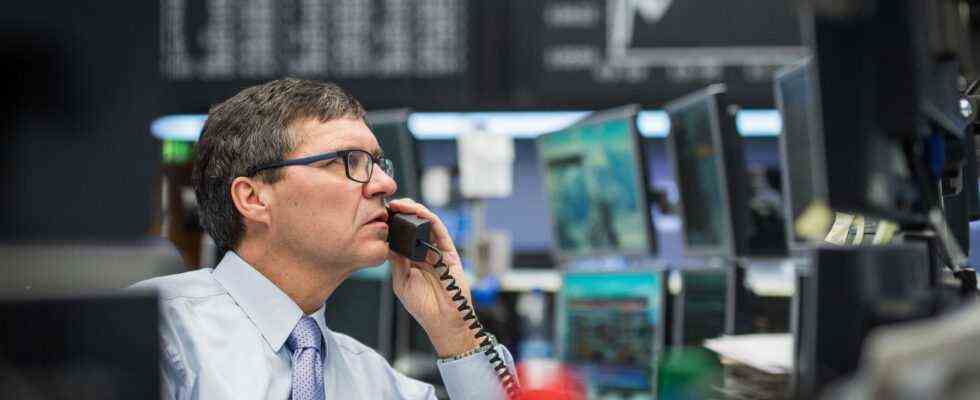Market report
Status: 09/24/2021 7:44 am
After the brilliant 600-point rally in the DAX, there was a bit of disillusionment on the stock exchanges at the end of the week. Now it remains to be seen what the real risk appetite of investors is. Because risks abound.
At first, banks and brokers do not trust the DAX to make big leaps in the morning. You estimate the 40 German standard values at the hour 0.1 percent lower at 15,625 points.
From a technical perspective, the DAX has reached a tricky point after its recent march from 15,019 points on Monday to 15,695 points on Thursday: the moving average of the past 50 trading days. This smoothing line currently runs at around 15,650 points.
Only when the standard values manage to clearly overcome this line at the daily closing price would the situation for the DAX brighten in the long term. As long as the DAX is listed below this, prices are more likely to fall.
From a fundamental perspective, too, the risks increase towards the end of the week. This includes the still unclear situation at the second largest Chinese real estate developer Evergrande, which could escalate at any time over the weekend.
But this also includes the general election, which could lead to coalition constellations that are likely to cause anything but cheers on the stock exchange. It takes courage to stay invested over the weekend and not take profits.
Meanwhile, Wall Street has given positive guidance for DAX trading. The major US stock indices increased their previous day gains significantly. The Dow Jones standard value index closed 1.5 percent higher to 34,764 points. The technology-heavy Nasdaq 100 advanced 0.9 percent to 15,317 points. The broad S&P 500 gained 1.2 percent to 4448 points.
Even hawkish statements by the US Federal Reserve, according to which it could start tapering in November and initiate a turnaround in interest rates as early as next year, could not scare investors. After all, a tighter monetary policy also means that the US economy is fundamentally robust, experts say.
The US Federal Reserve has taught another lesson “how to gently massage the markets to accept that a tightening is imminent,” wrote analyst Neil Wilson of the trading house Markets.com.
The morning’s mixed signals are coming from the Asian stock exchanges. While the Hang Seng in Hong Kong and the Shanghai Composite are trending sideways, investors in Japan are in a buying mood.
Shortly before the close of trading in Tokyo, the Nikkei index, which comprises 225 values, is 2.0 percent higher at 30,227 points. In some cases, this is also due to catch-up effects, as the Japanese stock exchange was closed yesterday due to a public holiday.
The euro can broadly hold yesterday’s gains and stabilize further above the $ 1.17 mark. At the hour, one euro pays 1.1737 dollars.
An ounce of gold costs $ 1,751 in the morning, 0.3 percent more than the day before. The day before, the gold price had temporarily slumped to $ 1737, the lowest level in over a month. The yellow precious metal was troubled by declining risk aversion among investors and the rising dollar.
Adidas competitor Nike is being slowed down by the month-long closure of its Vietnamese factories due to strict corona measures. Nike is therefore reducing its sales forecast for the entire fiscal year. Instead of a double-digit percentage growth, only a single-digit increase is expected. The share temporarily lost around 3.5 percent in after-hours trading on Thursday.

